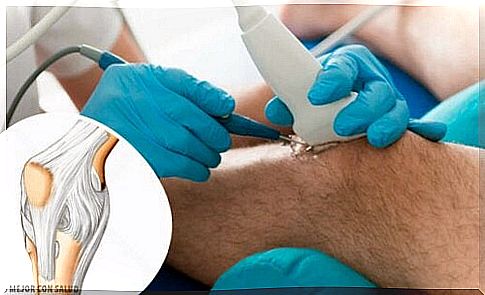Knee Surgery: What Are The Risks?

There are circumstances where knee surgery is the only option to treat or resolve problems that occur in this joint. This procedure is risky and is a choice that is often made when there is no other alternative.
In young people, knee problems usually arise due to the practice of some sporting activity or as a result of a work activity. In older people, knee pain is usually due to degenerative processes typical of aging.
There are cases in which pain in this joint seriously affects mobility and quality of life. In these circumstances, knee surgery is most common to solve the problem. Likewise, when there is a significant injury, the only alternative is to operate.
knee surgery

There are several types of knee surgery and each one responds to the specific needs and conditions of each patient. There are basically three operations of this type, and they are as follows:
- Total or partial replacement : this is the most common type of knee surgery and consists of removing the joint and replacing it with a plastic, ceramic or metallic prosthesis. It is performed when there is irreparable damage.
- Arthroscopy : is a minimally invasive knee surgery performed to remove or repair damaged menisci, a cruciate ligament, or cut pieces of torn cartilage. It is also helpful to perform synovectomy, which is the removal of the lining from the joint.
- Osteotomy : performed when there is injury in only one section of the knee. In the operation, the shape of the bones is modified and they are repositioned to avoid weight on the affected part. This technique is also used when a joint fracture has not completely healed.
Risks of total or partial replacement
In most cases, partial or total joint replacement is very effective in solving knee problems. Like any surgical intervention, it carries some risks, the most common being the following:
- Thrombus formation : this is the most frequent complication. The surgeon always takes precautionary measures that usually include anticoagulant medications, leg lifts, exercise, and compression stockings.
- Infection : About 2% of patients contract an infection within two years of knee surgery. You can avoid the problem by taking antibiotics or giving them during surgery.
- Osteolitis : is the breaking of the bone adjacent to the implant and usually requires a new surgical intervention.
- Implant fracture : it is a rare complication that can be prevented by avoiding excessive or inappropriate physical activity.
- Others : In very rare cases, allergic reactions to the metal of the implant occur. Improper placement of the implant can cause dislocations or a blow can cause components to loosen or dislodge.
Arthroscopy risks

The risks of arthroscopy are very low, since, as already mentioned, this is a minimally invasive surgery of the knee. Some of the complications that eventually occur are as follows:
- Anatomical damage : Cartilage, ligaments, tendons or other structures can be damaged by surgeon error or anatomical abnormalities of the patient.
- Infection : it is very rare and controlled by the administration of antibiotics.
- Movement limitation : is usually temporary and, in very rare cases, permanent.
- Thrombi : their formation is avoided with the anticoagulant measures we have already mentioned.
- Anesthesia complications.
- Damage to arteries, veins or nerves : if present, they are minimal and almost never important.
Osteotomy Risks
Osteotomy is an infrequently performed type of surgery as it usually requires replacement of the joint sooner or later. It consists of removing or adding a wedge of bone in the tibia or femur to take the weight off the injured area of the knee.
The risks involved are as follows:
- Infection : in the bone or soft tissue around you. It’s treated with antibiotics.
- Failures in the union of parts of the bones : it usually requires a new surgery.
- Nerve or blood vessel damage : may be of different severity.
- Partial and not total pain relief.
- Stiffness in the knee.
As we have seen, although knee surgery carries some risks, if the patient maintains adequate rest and follows his doctor’s recommendations, he can improve and return to a normal life.









